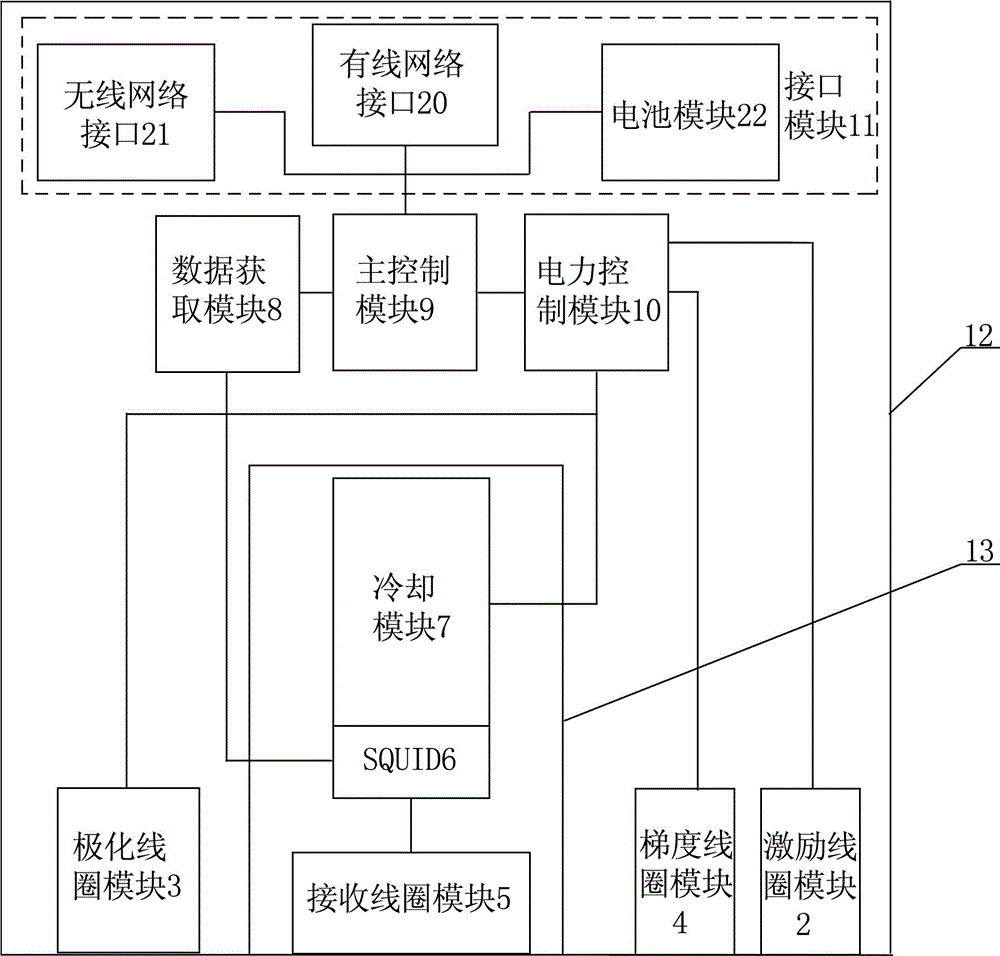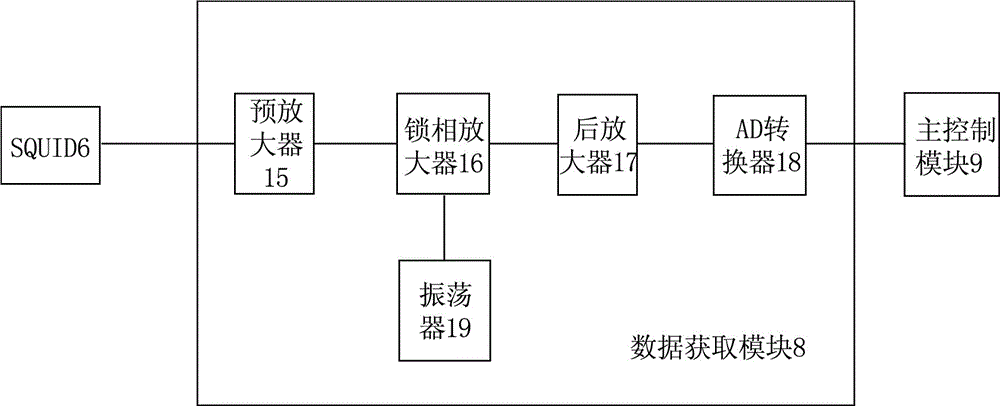Handheld ultralow field MRI (magnetic resonance imaging) system based on SQUID (superconducting quantum interference device)
An ultra-low-field, hand-held technology that is used in medical science, sensors, diagnostic recording/measurement, etc., to solve problems such as large cooling structures, inability to package SQUIDs together, and irregularities
- Summary
- Abstract
- Description
- Claims
- Application Information
AI Technical Summary
Problems solved by technology
Method used
Image
Examples
Embodiment approach 1
[0033] Such as figure 1 with Image 6 As shown, this SQUID-based handheld ultra-low field MRI system includes hardware and software. The hardware includes a smart handheld device 1, an excitation coil module 2, a polarization coil module 3, a gradient coil module 4, and a receiving coil module. 5, SQUID6, cooling module 7, data acquisition module 8, main control module 9, power control module 10, interface module 11, probe shell 12 and magnetic shield 13; Magnetic shield 13 is located in probe shell 12, magnetic shield The bottom of 13 is provided with opening, and opening is connected with the bottom of probe housing 12; Receive coil module 5, SQUID6 and cooling module 7 are all located in magnetic shield 13, receive coil module 5 is installed in the opening of magnetic shield 13, cooling The module 7 is in contact with the SQUID6; the polarizing coil module 3 and the gradient coil module 4 are all located inside the probe housing 12 and distributed on the outside of the mag...
Embodiment approach 2
[0045] In the case where other situations are the same as Embodiment 1, the difference is that at least three gradient coils are geometrically coded so that each voxel unit of the object to be measured is in a different frequency, phase, and excitation layer. In the software part In the magnetic field parameter transformation module, magnetic field parameter transformation is performed on all magnetic resonance signals acquired in a space volume, and the operation is repeated continuously.
Embodiment approach 3
[0047] When other conditions are the same as those of Embodiment 1 or Embodiment 2, the difference is that the excitation coil modules are not arranged in the probe housing, but are distributed around the measured object.
PUM
 Login to View More
Login to View More Abstract
Description
Claims
Application Information
 Login to View More
Login to View More - R&D
- Intellectual Property
- Life Sciences
- Materials
- Tech Scout
- Unparalleled Data Quality
- Higher Quality Content
- 60% Fewer Hallucinations
Browse by: Latest US Patents, China's latest patents, Technical Efficacy Thesaurus, Application Domain, Technology Topic, Popular Technical Reports.
© 2025 PatSnap. All rights reserved.Legal|Privacy policy|Modern Slavery Act Transparency Statement|Sitemap|About US| Contact US: help@patsnap.com



